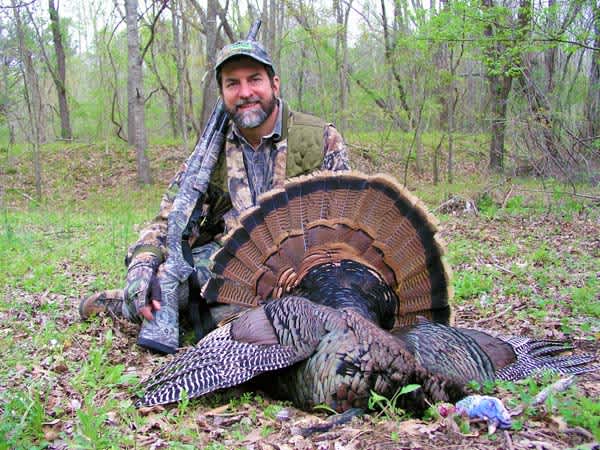Interview: Will Primos on Turkey Hunting
OutdoorHub Reporters 04.03.12

I’ve been blessed in my turkey hunting lifetime to hunt with some of the greatest turkey hunters who ever have lived. Many of them also have been my teachers, and over the last 45 years, I’ve learned turkey hunting tactics from each of them every time we’ve hunted turkeys together. Today, Will Primos of Flora, Mississippi, founder of Primos Hunting Calls, producer of the “TRUTH” hunting videos and DVDs and co-host of “Primos’ TRUTH About Hunting” TV show that airs on The Outdoor Channel, will tell us how he got into the outdoor industry.
 Question: Will, how did you get into the outdoor industry?
Question: Will, how did you get into the outdoor industry?
Primos: I started off making mouth calls for turkey hunting. Then I began creating friction calls and calls for deer, elk, duck and predators.
Question: How has your company been able to survive, while other turkey call companies have gone out of business?
Primos: Primos continues to produce new and innovating calls, and we’ve extended the line of our products into other avenues besides turkey calls. For instance, we came out with the Trigger Stick, which is ideal as a shooting rest or as a camera tripod. We try to come up with products to make the consumer’s outdoor experience more enjoyable.
Question: What’s the number one question you’re asked at turkey hunting seminars?
Primos: I’m most often asked what to do when a turkey flies off the roost and lands in the middle of the field, but won’t answer to a call. The best way to take a field turkey is not to sit on the edge of the field and try to call him to you. The turkey knows that if you’re a hen on the edge of the field, you should see him and come in to him. In the past, instead of sitting on the edge of the field, you could back off into the woods 50 to 100 yards away from the field where the turkey couldn’t see you and then make him come to you. Today, we can use turkey decoys to bring in those old field turkeys that are difficult to take. When those turkeys see a decoy that looks like a gobbler in full strut and then sees a strange gobbler strutting in his territory, he has to run off that gobbler. This one tactic has been the death of many smart, field turkeys. But be sure to check your state’s regulations about using turkey decoys.
Question: Has using decoys changed turkey hunting in the last few years?
Primos: I’ve seen it help, and I’ve seen it hurt. Turkey decoys are like turkey calls. If you use the turkey call wrong, you can run off more turkeys than you’ll take. The same is true of decoys. For instance, don’t put the decoy facing the direction where you expect the gobbler to come from, because that type of posture from the decoy sends a message to the gobbler that’s coming in that says, “I’ll challenge you and take you on.” Remember, the gobbler coming in wants to run off that decoy. He doesn’t want to get into an all-out fight with him. So, if you put the rear of the turkey gobbler facing the direction from which you expect the gobbler to come, that’s a submissive posture. This posture relates to the gobbler that, “I know you’re the boss gobbler, and I don’t really want to challenge you.” These little tips can play a major role in whether a decoy works or not.
 Question: What’s another question often asked at the turkey hunting seminars you give?
Question: What’s another question often asked at the turkey hunting seminars you give?
Primos: Many people ask if they’re calling too much. If you’re calling like a turkey and acting like one when you call, you’re probably not calling too much.
Question: How do you sound like a turkey?
Primos: A turkey doesn’t sit down by a tree, back up to the tree, not move his head and yelp. Turkeys walk through the woods, moving their heads from left to right and forward and backward. So, you have to throw your call in different directions and use various levels of volume to sound like a moving turkey, rather than one backed up against a tree, sitting on the ground, yelping. Remember that you’re trying to make a gobbler come to you, which isn’t what a gobbler does in the wild. He stands in one place, gobbles, struts and drums, and the hens come to him. So, where you set-up to call that turkey can add a tremendous amount of realism to your calling.
Question: Where’s a productive place to set up to call in turkeys?
Primos: Your setup depends on the terrain where you’re hunting. A gobbler prefers to see as much territory as he can when he approaches before he starts looking for a hen. You want to sit down and call where you don’t have a lot of cover, but not in too much of a wide-open area, so the gobbler can see a hen from the position from where she’s calling. You have to make that turkey come in close enough that he believes when he reaches a certain point he should be able to see you.
Question: Give me one more question you’re often asked in seminars.
Primos: I’m always asked what type of shotgun to use to hunt turkeys. There are a number of quality turkey shotguns on the market today. You can shoot almost any type of gun you want and take turkeys. I shoot a 20 gauge, 3 inch magnum with a Primos Jelly Head Choke Tube. I can take turkeys at 40 yards all day with that gun. It’s light, easy to maneuver and doesn’t jar the fillings out of my teeth when I shoot it. I enjoy hunting with a 20 gauge.

